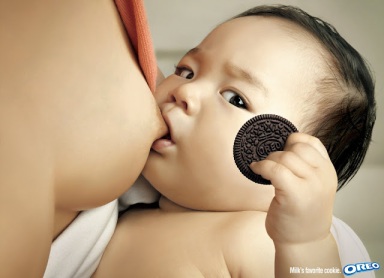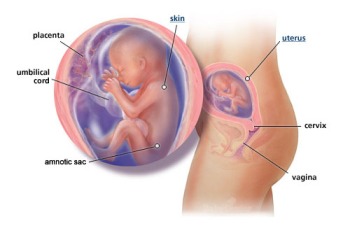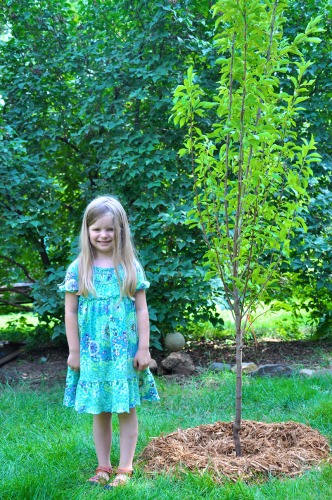Drew Barrymore Correctly Predicts Her Baby’s Gender

After announcing her pregnancy, Drew Barrymore exclusively revealed to Life & Style magazine that she is indeed carrying a girl! Like a true intuitive Pisces, Drew said in the past, “I feel I’m sort of surrounded by children and I do feel I’m going to have a child at some point. Maybe a little girl. I feel it, but I don’t know if it’s going to happen. We’ll just have to wait and see.”

After weeks of speculation and precariously placed handbags, Megan Fox has officially announced that she and husband Brian Austin Green are expecting! I’m not sure if she knew she was pregnant at the time or not, but in this month’s issue of Cosmopolitan, she said of future children, “I want at least two, probably three kids … I’ve always been maternal.” She even told E! News last month, “I’d love to have kids. I mean, it’s going to happen when it’s going to happen, but it’s not something that I’ve planned against or for… I’m just leaving it out there for the universe.” More mommy intuition, perhaps?
Giuliana and Bill Rancic (Finally) Pregnant via Surrogate

After years of struggling with fertility, breast cancer, and a miscarriage, Bill and Giuliana Rancic have chosen a surrogate and finally get to be parents! This makes me so happy since fertility issues can be devastating, especially when accompanied with the loss of a baby, and I can’t even imagine what its like to battle cancer in the midst of it all. Giuliana and Bill have been very open about their difficult journey on their reality show and I am so happy for this family!
Uproar Over Oreo Ad With Breastfeeding Baby

One MSNBC writer criticized the ad by saying it was “kind of… icky… about the way this ad blatantly sexualizes breast-feeding” and declared the ad to be of the “women-being-objectified” sort. I don’t know about you, but I see nothing sexualized or objectified here. It is a baby being fed the way nature intended. What really bothers me is the fact that a 6-month-old baby is holding such a horrendously sugar-packed unhealthy treat. I have so much to say about this ordeal that I’m making an entire post about it. Stay tuned for that one ;)
Florida Governor Funds Crisis Pregnancy Centers, Vetoes Rape Crisis Centers
“…despite pulling funding from multiple health care providers as a means of balancing the budget, [Governer] Scott still found $2 millionto give to deceptive “crisis pregnancy centers” dedicated to talking women into continuing pregnancies they consider terminating.” This comes from the same state that may fine and/or arrest you for having sex in a position other than missionary, oral sex, premarital sex if the couple loves together, or kissing your wife’s breast. It is also illegal to sing while wearing a swimsuit in a public place. Clearly Florida has its priorities in order…
Eating Meat Speeds Reproduction In Early Humans ~ via LA Times

“When a mother eats meat, her breast-fed child’s brain grows faster and she is able to wean the child at an earlier age, allowing her to have more children faster, the article explains. That provided a distinct competitive advantage for early humans when limited resources and a small population made it difficult for them to thrive. “Eating meat enabled the breast-feeding periods and thereby the time between births to be shortened,” said psychologist Elia Psouni of Lund University in Sweden. “This must have had a crucial impact on human evolution.”
The Economic Value of Breastfeeding ~ via Mothering.com
“In six months, 13.3% of US women produce breast milk of equal economic value to nearly two years of formula sales. If 50% of moms were exclusively breastfeeding at 6 months as the American Academy of Pediatrics and Healthy People 2010 recommend, the total yearly economic value of US breast milk would be at least $28 billion.”
Prenatal Exposure to PAH Linked To Obesity
 “[The] study strongly suggests that a common urban air pollutant — Polycyclic Aromatic Hydrocarbons, PAH for short — could be playing a role. PAH’s are released into the air from the burning of coal, diesel, oil and gas, or other organic substances such as tobacco. Trucks and buses are the worst polluters as they use diesel fuel, not gasoline. Previous research at the Center indicates that exposure to PAH’s poses a number of hazards. Prenatal exposure to PAH can negatively affect childhood IQ’s and is linked to anxiety, depression and attention problems in young children. Also PAH are known carcinogens and has been shown to disrupt the body’s endocrine system — which is instrumental in regulating mood, growth and development, metabolism, sexual function and reproductive processes.
“[The] study strongly suggests that a common urban air pollutant — Polycyclic Aromatic Hydrocarbons, PAH for short — could be playing a role. PAH’s are released into the air from the burning of coal, diesel, oil and gas, or other organic substances such as tobacco. Trucks and buses are the worst polluters as they use diesel fuel, not gasoline. Previous research at the Center indicates that exposure to PAH’s poses a number of hazards. Prenatal exposure to PAH can negatively affect childhood IQ’s and is linked to anxiety, depression and attention problems in young children. Also PAH are known carcinogens and has been shown to disrupt the body’s endocrine system — which is instrumental in regulating mood, growth and development, metabolism, sexual function and reproductive processes.
The “5 S’s” Eases Infant Post-Shot Pain Better Than Sugar Water
“…The “5 S’s”: swaddling, side/stomach position, shushing sounds, swinging and suckling. If babies were doing four out of five of these “S’s,” they would usually stop crying within 45 seconds after the shot, according to a new study published in the journal Pediatrics. Harrington says the babies who only received the sugar solution were still crying 2 minutes after getting the shot.” If you’re not familiar with the “5 S’s”, the system designed to calmly soothe babies by mimicking conditions in the womb, has been popularized through the book “The Happiest Baby On The Block”. Watch below to see these daddies calming their babies down like pros.
This Week’s Birth Stories:
A Peaceful Home Birth With A True Knot In The Cord ~ via Mama Birth
HBA2C; 50 Hours Of Labor After SROM ~ via Birth Without Fear
A Successful Home Birth After 4 Cesareans (HBA4C) ~ via Birth Without Fear
A Sacred Orgasmic Birth After 2 Miscarriages ~ via Birth Without Fear







